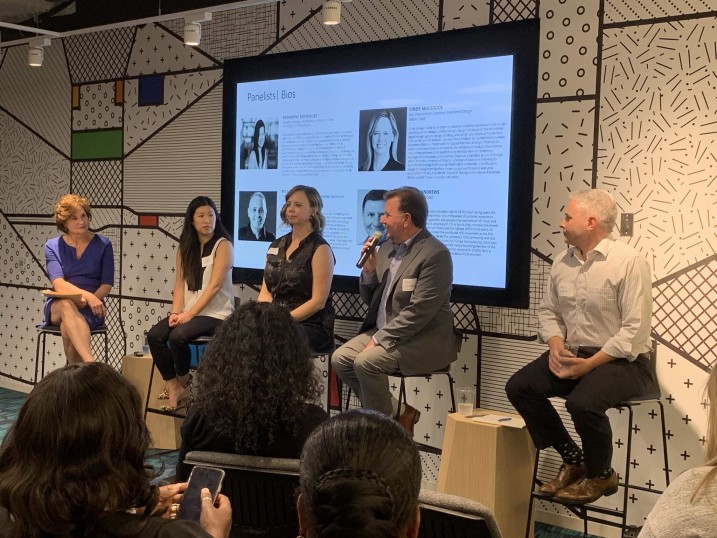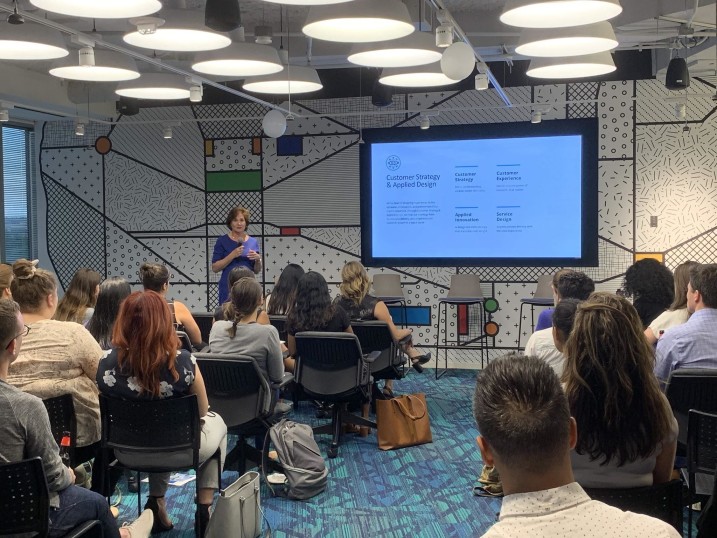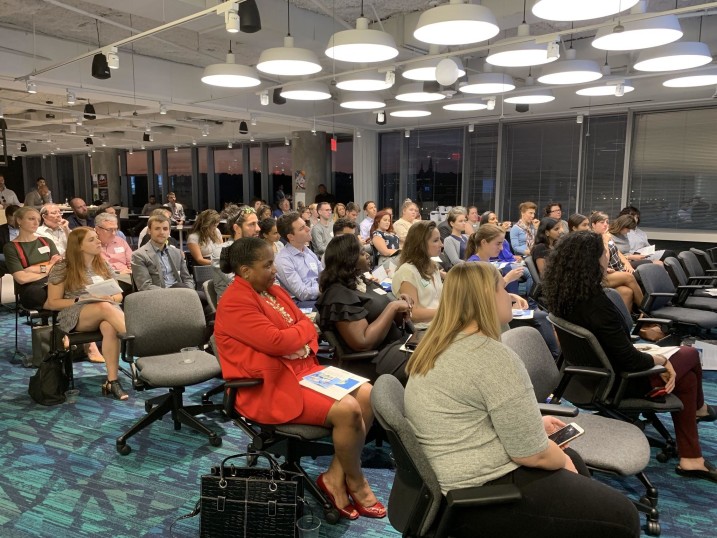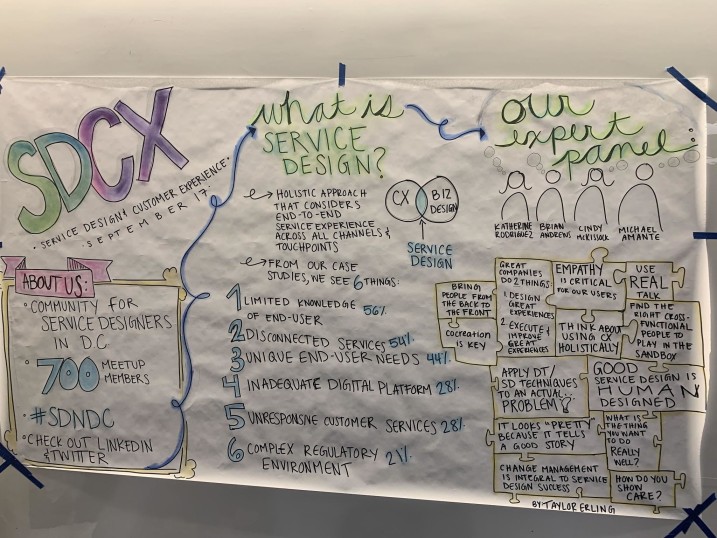The conversation then led to how design is defined in each organization and how it is executed. The panelists answered that building enduring and holistic capabilities and processes that garner positive results are more important than defining what design is. There are always misunderstandings between what people at the corporate level think their customers want and what customers actually need; aood service designer looks at problems holistically and approach their stakeholders with humility and empathy to understand needs at every level. Creating shared experiences will help decrease the gaps between customers and organizations.
When asked about transitioning from design to implemention, the panel shared some interesting insights. For one, designers need to consider points of view from different lenses such as customer, business, and operations. Additionally, including stakeholders from all levels throughout the design and implementation in the process will de-risk the project and promote positive team mentality. Risk management was also mentioned as an essential part of the design process because through anticipating failure, organizations can turn a detractor into a promoter for change. Another big factor in executing design is promoting change management; designers need to ensure that the trajectory of change is aiming at something transformative in order to unlock change-driven missions of organization and government entities.
Closing the conversation for the night, the panelists discussed what it means to “delight.”Katherine shared that Marriott follows the principle of “surprise and delight” for different levels of customers with distinct needs. For example, when serving their luxury customer, the design team has to consider how to serve their guests who have access to everything at their fingertips. The insight they gathered was letting customers feel they are cared about rather than cared for is what matters most. Brian added that for a successful experience, it needs to accomplish what the customers are looking for with limited friction as well as building an emotional connection.











Share your thoughts
0 RepliesPlease login to comment